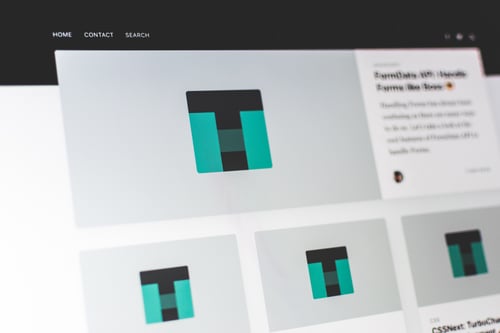
5 Best Practices for Website Redesign Success
Having been designing and developing websites since 1999, I've learned a few best practices that apply to any kind of website project. It doesn't matter if you're just making a few tweaks to a website, or redoing the entire thing. The content management system doesn't apply to these best practices, nor does the industry your company is in.
By keeping in mind these five ideas, your website redesign project plan will go smoother and with fewer glitches.
Research your current site
It's altogether possible that the complete website overhaul you want to do is a much larger project than what you really need to accomplish. By running website user testing on your site, you can determine if a full redesign is warranted, or if instead you just need to add more conversion opportunities to the design and tweak the header. Even if the results show that a redesign is needed, you can use the data as a benchmark to test the new design against.
The test that I usually run on clients' sites is the 5 second test. In it the viewer sees your site for 5 seconds, and then answers some questions about the design, such as:
- what is the company name?
- where would you find pricing information?
- what is the service or product the site provides?
- do you think this site is trustworthy?
By running this short test for 100 results or so, you get answers to the big picture questions for your site, like does your site have strong branding, does it convey your unique value proposition, is it easy to navigate, etc.
I prefer UsabilityHub for my user testing. You can use whatever audience they come up with, or you can pay extra to target specific demographics, like your ideal customer.
Have a website content plan
insertQuote
One of the biggest hurdles in completing a website redesign is overhauling your content and having it ready to go for your designer. Not having a plan for who's reviewing the content and when it's due can mean the project deadline has to be pushed. Writing content for a site, or any content, always takes longer than expected. It's not an easy thing to put into words what your company really provides, or what you're trying to teach your reader.
Doing a content-first website redesign means having the content nearly finished before the design even starts. The design should compliment the content and display it as best as possible, not the other way around. Also, your designer may read your content and have new ideas for the design, especially when it comes to having a strong hierarchy on the page.
Effective communication
I've been on several projects in the past where I was brought into the project much later than I would have wanted to. I saw areas where I could have shared my expertise and the project may have taken a different path, which would have benefited the client.
Bringing in your designer earlier than you think means they can see the process of the project and get a better sense of how the project will unfold. If they see the content is taking longer to be created, or that there's questions on how much of the site to redo, they can be leaned on for their viewpoint. Building a website that is profitable for their client is a primary goal.
Effective communication also means sharing expectations that all parties may have on the redesign process. You may think that the designer needs one thing, but it turns out they need other things first. Getting on the same page as your designer means no one will be left feeling disappointed and the project will run smooth.
Deadline obstructions
Every project has it's quirks, and any project lasting more than a month or two will run into unexpected issues. Sicknesses, vacations, technical challenges, and business changes can all affect how the project timeline works in real life. Ideally, all deadlines are met and everyone's happy, but reality is that we're all human and things come up.
The challenge is how to greet these issues and find a way around them.
Owning the project
Your website redesign project should be a priority for you, not just something you're working on on the side. Your new website is a priority for your designer, and when you treat it the same way, and take ownership of the process, then you'll have better communication and less issues.
The best salesperson for your company is your website. It's often the first impression someone has about your company.
Taking ownership means being available to your designer, following up on questions they ask, and asking questions to get everyone on the same page. It means pulling in additional resources if needed to get the job done (like a content writer or photographer), and you'll feel accomplished when the new site is up and you're proudly sharing it with your colleagues.
Wrap Up
The web design process is an iterative thing, and often every project is different from my end. Keep these best practices in mind and work a plan out with your designer to make sure you’re all on the same page. Keep in mind that new features may need to wait until after launch, and websites will always change and it doesn’t need to be perfect.
I help businesses and marketers build marketing and sales systems that drive leads and scale with ease.
Not sure where to start? Take my marketing quiz and get personalized next steps.





